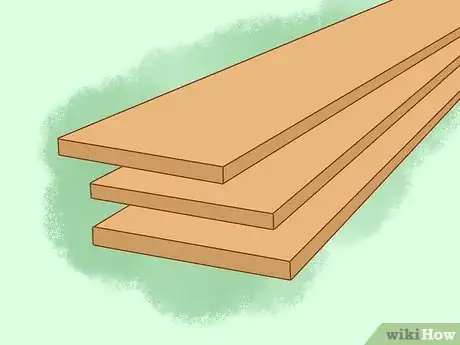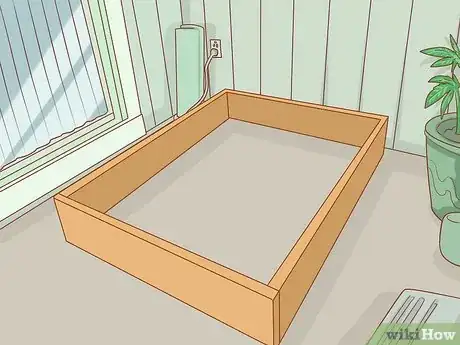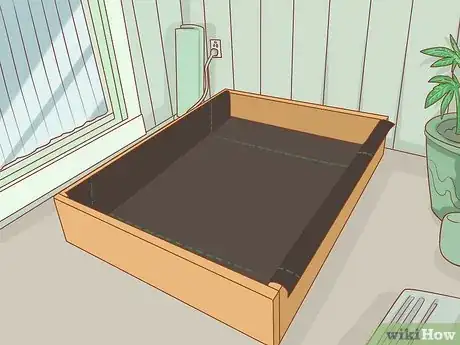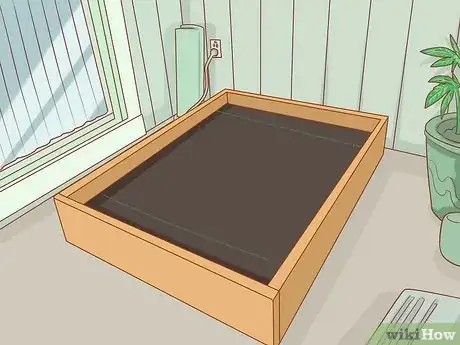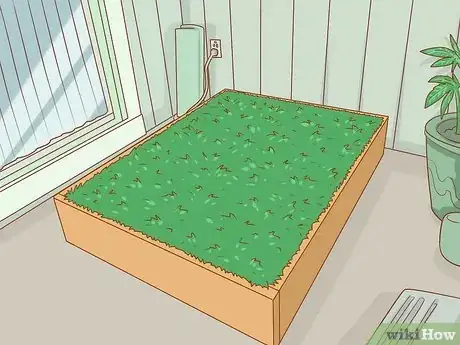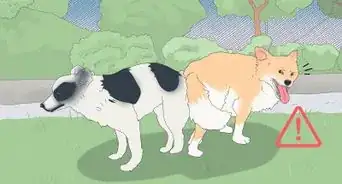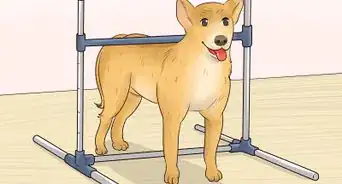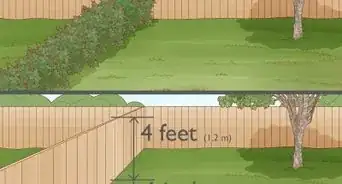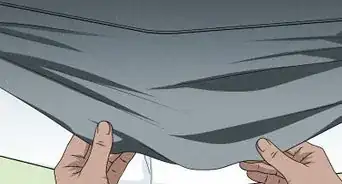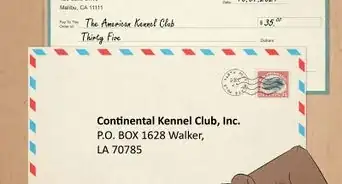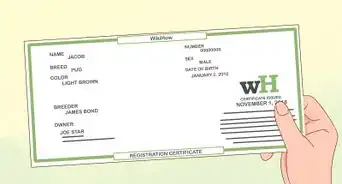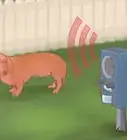This article was co-authored by Beverly Ulbrich and by wikiHow staff writer, Eric McClure. Beverly Ulbrich is a Dog Behaviorist and Trainer and the Founder of The Pooch Coach, a private dog training business based in the San Francisco Bay Area. She is a Certified CGC (Canine Good Citizen) Evaluator by the American Kennel Club and has served on the Board of Directors for the American Humane Association and Rocket Dog Rescue. She has been voted the best private dog trainer in the San Francisco Bay Area 4 times by SF Chronicle and by Bay Woof, and she has won 4 "Top Dog Blog" awards. She has also been featured on TV as a dog behavior expert. Beverly has over 18 years of dog behavior training experience and specializes in dog aggression and anxiety training. She has a Master of Business Administration from Santa Clara University and a BS from Rutgers University.
There are 8 references cited in this article, which can be found at the bottom of the page.
This article has been viewed 17,425 times.
If you live in a city with a super small backyard or you’re in a condo/apartment with a balcony, you may want a quick way to let your dog relieve themselves without going on a long walk to a nearby grassy area. We’ve got a fun and easy solution for you—a DIY outdoor potty area! This simple solution will save you a ton of time if you’re in a rush but need to let your dog out, and it’s also a great tool if you want help housetraining your puppy. Read on to learn how to build a basic potty area for your pup.
Steps
Choosing and Measuring the Location
-
1Determine where you’ll build your pup’s potty area. If your dog isn’t particular, choose an area where the potty will be out of the way. If it’s hot where you live, placing the potty area in a shaded area may be ideal. If your dog isn’t particular, choose an area where the potty will be out of the way.[1]
- Does your pup like to “hide” when they go to the bathroom? If so, set your potty area in the most secluded part of your yard.
- If your dog has a portion of the concrete patio/yard where they normally use the bathroom, build your potty area on top of it.
- Keep the slope and drainage capacity of the area in mind. If a patch of concrete is slanted towards your home, you may end up with urine streams leading towards your back door.
-
2Calculate how big you want to make the potty area. You likely want to build a potty area that’s at least 4 by 4 feet (1.2 by 1.2 m) so your dog has plenty of space to sniff and poke around, but you can make it any size you’d like. If you have a larger breed, you may want to make it twice (or even three times) as big.[2]
- You don’t have to build a square-shaped potty area. In fact, if you’ve got a deep, but not particularly wide yard, this may be ideal. You can build a 4 by 8 ft (1.2 by 2.4 m) potty area, for example.
Advertisement -
3Mark the dimensions of the potty area with chalk to size your frame. Use your measuring tape to calculate your dimensions. If you want to be super precise (you don’t have to be), get a chalk line and enlist a friend to hold one end for you. Pull the string taut before snapping it into the ground to mark each line. Alternatively, draw your box out freehand with a piece of chalk.[3]
- You can use a straight edge, like a spirit level or plank of wood, to mark straight lines if you’re drawing freehand.
- If you’re working by yourself, use small objects (like a can, or pot) to mark the four corners of your potty area and keep track of your dimensions.
Constructing the Frame
-
1Cut your wood boards if you didn’t get them cut to size. Purchase 1 by 4 in (25 by 102 mm) treated lumber boards. You can get them pre-cut at the building supply store, or cut them to size yourself using a circular saw or using a jigsaw. Set your boards on sawhorses, mark your cuts with a pencil, and put on protective eyewear before carefully making your cuts.[4]
- For a simpler solution with a more industrial look, you can always stack cinderblocks instead of cutting wood boards.
- If you don’t want to use lumber, you can use rubber landscape edging. Get the firmer version of landscape edging since you can’t bury the softer stuff in grass with a concrete backyard.
- Any kind of wood should work for this so long as it’s weather or pressure treated. Just stay away from plywood—it tends to absorb moisture and erode very quickly.
-
2Secure your boards together using a drill and wood screws. Any kind of wood screws should work so long as they’re long enough to drive through the thinner side of your boards (2 in (5.1 cm) wood screws will work fine). Set the thin end of your longest board inside of the adjacent board at a 90-degree angle. Drive at least 2 screws through the adjacent board and into the center of the longer board to secure them together.[5]
- Repeat this process for the remaining sides of your frame to create your box-shaped frame.
- Don’t worry about your frame being the world’s strongest, most reinforced frame of all-time. It’s not going to be holding so much weight that it’ll fall apart, and it’d be super easy to repair if it did.
-
3Set your frame down and reinforce it with hinges if necessary. Once you’ve constructed the frame, place it over the designated area where you drew your chalk. If it feels a little wobbly and you want to strengthen the frame, pick up four pieces of flashing and screw them into the walls of the lumber on the inside of the frame. This will help the frame keep its shape over time.[6]
- It might look a little “meh” right now, but once you fill it in, it’ll look a lot better. You can also line the exterior of the frame with decorative rocks when you’re done to dress it up!
Filling the Potty Area
-
1Lay landscape fabric down if you have cracks in your concrete. Landscape fabric is typically laid down in raised beds to prevent weeds from growing through raised beds. If you have cracks in your concrete—even a few little ones—lay this fabric down to keep your potty area weed-free. Purchase a sheet of landscape fabric, cut it to size with scissors, and lay it down before filling the potty area in.[7]
- This popular landscape fabric from Colorful Hope should be more than enough.
- If you don’t have cracks in the concrete—or you’re simply not worried about weeds—go ahead and skip this step.
-
2Fill the potty area 1/3 of the way with a base layer of pea gravel. Pour the gravel inside of the frame and spread it out by hand so that the bottom 1/3 of the potty area is filled. The gravel will provide drainage for your pup’s urine, to keep it from building up in the potty area over time.[8]
- To determine how much pea gravel you need, multiply the length of the frame by the width to find the area. For pea gravel, 0.5 cubic feet (0.014 m3) will cover 6 square feet (0.56 m2). For most potty areas, you should need two bags.
- You can find a wide range of pea gravel online, or pick some up from a gardening or building supply store.
-
3Place a sheet of peg board on top of the pea gravel (optional). Pick up a cheap sheet of wood peg board from a home improvement store and set it on top of the pea gravel. This will keep the pea gravel from shifting around over time. The holes in the peg board will also allow for plenty of drainage.[9]
- You can totally skip this part if you’d like. It might mean the top soil you set down shifts around more often. It’s probably a good idea if you’ve got a bigger dog or a digging enthusiast, though.
- If you can’t find a peg board that fills out the frame, you can cut multiple pieces to fit your frame using a circular saw or jigsaw. Alternatively, you can buy smaller panels and lay them out next to one another.
-
4Lay landscape fabric over the peg board and/or pea gravel. An additional layer of landscape fabric will keep your top soil and pea gravel separated here. This way, the urine can drain through below the soil and air out. Cut the fabric with scissors to match the size of the potty area and lay it on top of the gravel.[10]
- Don’t worry about it looking pretty—it’s going to get covered up.
- You can line the edges with small, heavy stones if you’re worried about your dog digging down through the top soil and tearing up the fabric.
-
5Fill another 1/3 of the potty area with potting soil. Swing by your local gardening store and pick up some basic potting soil. The cheap stuff will work just fine, so don’t break the bank here. Fill in the next 1/3 of your potty area with soil and spread it around with a trowel (or by hand if you don’t mind getting dirty).[11]
-
6Lay fresh sod or artificial turf over the potting soil. You have some freedom at this point. For the natural look, purchase a roll or two of fresh sod from your local gardening store. Lay it down on top of the soil. Alternatively, you can buy artificial turf and lay that on top of the soil.[12]
- You can cut sod and artificial turf with a utility knife if you have any left over.
- There is special artificial grass designed specifically for this! MTBRO’s artificial dog grass is an especially popular brand if you want high-quality material.
- If your dog tends to prefer gravel or sand, lay that down instead of soil or turf. You can even do a “half and half” where 1/2 of the bed is soil and the other 1/2 is gravel or stone.
- If you go for fresh sod, water it as soon as you’re done laying it down to help it settle.
Things You’ll Need
- Measuring tape
- Chalk
- Pencil (optional)
- Circular saw or jigsaw (optional)
- Sawhorses (optional)
- 1 by 4 in (2.5 by 10.2 cm) Wood boards
- Drill
- Wood screws
- Flashing (optional)
- Pea gravel
- Landscape fabric
- Potting soil
- Sod, artificial grass, or stones
References
- ↑ https://balconyboss.com/how-to-and-diy/easy-build-diy-balcony-dog-potty-areas-with-real-grass/
- ↑ https://balconyboss.com/how-to-and-diy/easy-build-diy-balcony-dog-potty-areas-with-real-grass/
- ↑ https://www.thisoldhouse.com/workshops/21019386/making-perfect-chalk-lines
- ↑ https://www.almanac.com/content/how-build-raised-garden-bed
- ↑ https://www.almanac.com/content/how-build-raised-garden-bed>
- ↑ https://puredogtalk.com/wp-content/uploads/2017/01/BuildingAPottyBox-20170111.pdf
- ↑ https://www.bobvila.com/articles/landscape-fabric/
- ↑ https://extension.colostate.edu/topic-areas/yard-garden/mulches-for-home-grounds-7-214/
- ↑ https://balconyboss.com/how-to-and-diy/easy-build-diy-balcony-dog-potty-areas-with-real-grass/



